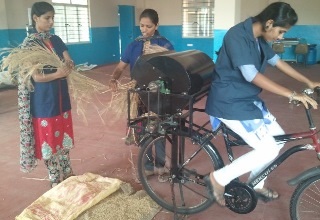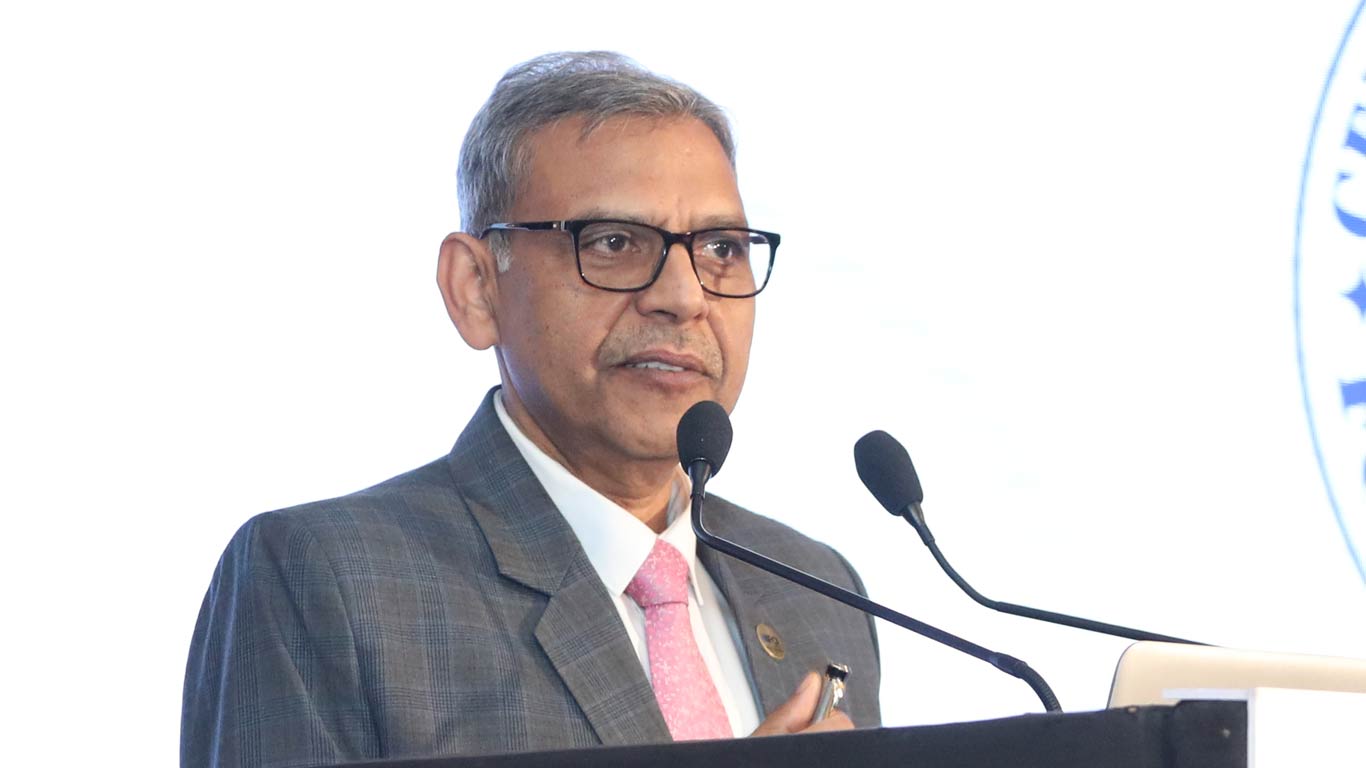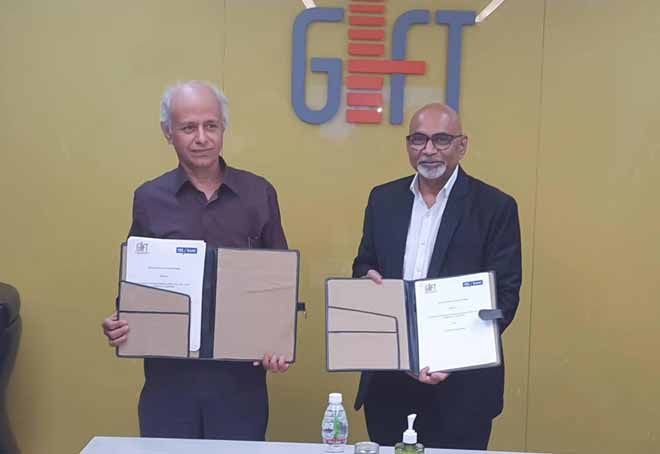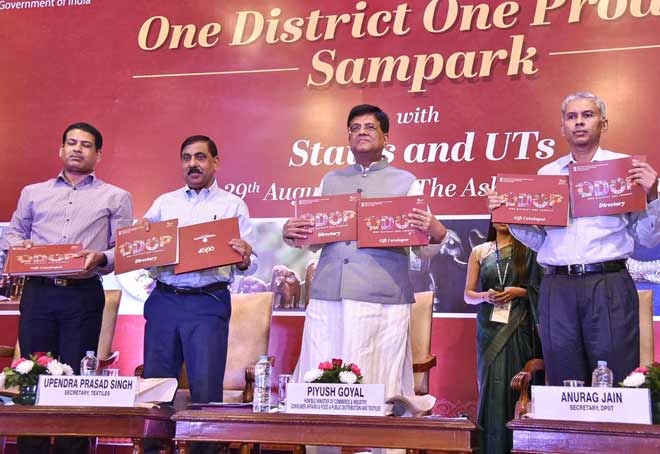SJB Institute of Technology unveils manual threshing machine
Updated: Jun 07, 2014 10:12:59am

“The machine is very useful and handy for the women folk in the agricultural field. With it one can easily separate grains from stalks and husks. The machine incorporates many new features which makes it light, portable, easy to handle and above all it does not cost much to fabricate on a large scale,” said H O D Mechanical Engineering, SJBIT, T Madhusudhan.
Performance of the machine is highly satisfactory, he added.
The machine which can be used for multiple crops such as Wheat, Rice, Jawar and Ragi was designed mainly for womenfolk engaged in agriculture.
It was the outcome of a project titled ‘Design and Fabrication of Manual Threshing Machine’ carried out by lady students: Deepika N, Deepika S, and Fauziya Parveen, a release said.
Separation of grains from the harvested crop is still a challenge in agriculture fields. Not only is it a laborious process, it results in plenty of waste, other than the time and money spent on the task.
It is usually the small farmers, dependent on hand threshes who are largely affected by the high labour costs. Although there are some threshing machines available, only large farmers can afford them, who use them for large scale work. However wastage is inevitable in both the cases.
In this project an attempt has been made to design and fabricate a manual operated, portable and economically viable threshing machine. The machine is for practical use to process crops grown on small plots of land ranging from half an acre to 10 acres.
The actual threshing unit can be fabricated at a very low cost of Rs 5000 and the machine can be mounted on bicycle. The advantage of mounting on bicycle is that the machine can be carried to the harvesting place with ease. Since hard labour is not required this can be easily operated by women folk involving maximum two people.
Using women labour once again reduces labour cost. Currently, a pull behind thresher/cleaner combine that is not portable is being used by big farmers. With this system, the crops must be harvested and then transported to an offsite location for processing.
As far as advantages are concerned, the machine eliminates the problem of labour availability as it can be operated by only two persons. Further, there is no need for electric power or any other non-conventional source of energy as the machine is operated manually and easy to operate.
The transportation of paddy from field to processing areas is performed mainly by humans and animals and sometimes using mechanical gadjets. These traditional methods of transport result in grain losses. Since this machine is portable grain losses can be reduced.
Significantly, farmers with small fragmented land holdings can effectively use this machine. Relatively less in cost and weight (35 kg) when compared to other threshing machines, the machine is within reach of small and medium scale farmers. Further, it is compact, durable and portable as the entire machine can be carried on a bicycle. Operating and maintenance of the machine does not require any special skills.
Above all, it is easy to operate and handle by women as it has been specially designed for them. There is no chance of breakage of whole pegs assembly as it uses the thread pegs which are easily replaced if any damage occurs. Although the capacity of this machine is relatively less, it will be compensated by its portability feature and reduced operating cost.
Around 150 kgs of grains can be separated per hour and efficiency of the thresher is 99 per cent compared to any other threshing mechanism as wastage is almost nil. It is also very useful for farmers in hilly regions as they require machines which are portable as the roads may be inadequate. (KNN/ES)











